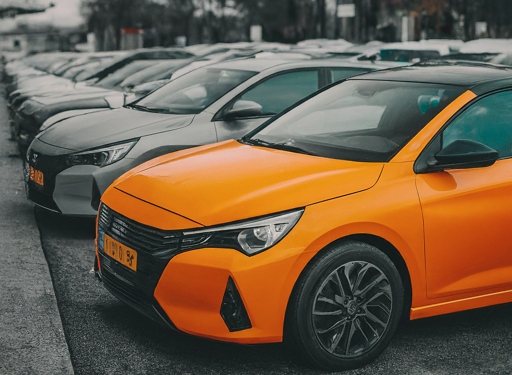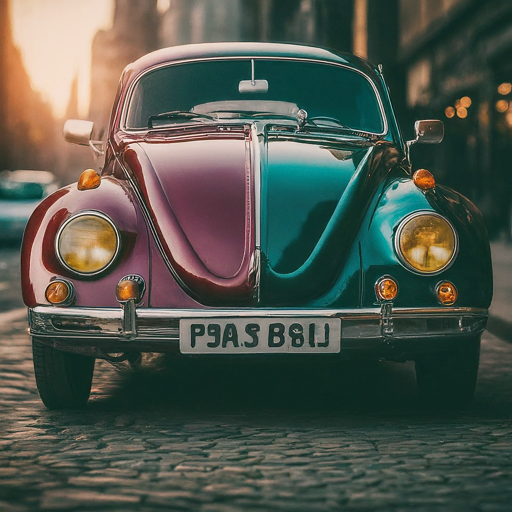I recently stumbled upon a thought-provoking reel by @drkaranrajan that got me thinking about the gradual disappearance of color from our lives. Sure, some of it is due to entropy at work and the science of aging. As explained by Dr.Rajan’s reel, after the age of 10, the human lens gradually yellows as a result of absorbing UV light, a baked in defence mechanism to protect the retina at the back of the eye, the yellowness in turn has an affect similar to taking the warm slider up on lightroom, thus reducing the vibrancy of other colors, this combined with the fact that the number and sensitivity of color receptors in our eyes called cones decreases with age, further affecting color and contrast. But there’s more to it than just biology.

The world around us seems to be gravitating towards a duller palette, and our cars are a prime example and indicator of this weird phenomenon. Ever notice how a sea of white, black, and gray cars dominate the roads these days? Does the name Nardo grey ring a bell? Well it’s one of the most popular color options for performance and sports car buyers, and it’s a far cry from the vibrant yellow and the Maranello red that adorned Lamborghinis and Ferraris from yesteryears. According to RAC, in the UK, grey has retained its position as the favourite new car color for the sixth year in a row in 2023, with 509,194 grey cars sold, accounting for more than a quarter (26.8%) of the market. This trend is not limited to the UK, as grey, along with other neutral colors like white, black, and silver, have become the most popular car colors globally.
Gone are the vibrant hues of the 70s and 80s, when a car’s color meant more than what it said on the build sheet, people took pride in the vibrancy of their cars and it was seen as an extension of their vibrant personality.
Now, don’t get me wrong, there’s nothing inherently wrong with grayscale. It’s sleek, sophisticated, and certainly has its place. But when it becomes the default, the world starts to lose some of its vibrancy. A study by the Science Museum Group even suggests that the world is quite literally “converging into a greyness.” Yikes.


A History of Fading Colors
Cars weren’t always so monochrome. In the early 20th century, car paint jobs were a luxury, often taking weeks to complete. Henry Ford’s revolutionary fast-drying paint changed the game, making black the most affordable and therefore dominant color.
The World Wars and subsequent economic downturns further solidified the trend toward basic colors. It wasn’t until the post-World War II boom that we saw a resurgence of vibrant hues on our roads. But even that colorful era eventually succumbed to the drab tones of the Vietnam War and the gas crisis of the 1970s.
Why So Serious?
Fast forward to today, and over 75% of cars sold are white, black, gray, or silver. So, what gives? Well, there are a few reasons:
- Practicality: Neutral colors are easier to maintain, hide dirt better, and often have a higher resale value.
- Psychology: Some studies suggest that certain colors can influence driving behavior, and muted tones are considered less distracting.
- Trendiness: The rise of minimalist design has pushed earthy, muted tones into the spotlight.



A Splash of Hope
The dull cars might be a sign, that the world we live in is becoming a dull, superficial, and a more depressing place. Our attention spans are shorter than ever, most of us end up measuring the vibrancy of phone and laptop screens rather than the color of our lives and even those who do try to make our lives more vibrant often do it for the gram. Our happiness and mood are now dictated by algorithms and Google’s trending page and who would have thought that the cars we buy would be an indicator of just how colorless and mechanical our lives have become?
But it’s not all doom and gloom. Luxury cars still embrace a wider range of colors, and quirky models like the Fiat 500 inject some much-needed personality into the automotive rainbow. Even mainstream manufacturers are starting to experiment with more interesting shades and finishes. This gets me thinking, maybe there is some hope. In a generation that’s more aware and conscious about everything than ever before, maybe there is hope and space for a brighter outlook.


Perhaps the future holds a return to a more colorful automotive landscape and a brighter outlook to life, where we appreciate the nature and colors around us, and where people can express themselves without the fear of sounding woke or offensive. Where honest opinions are worth more than picking a “politically correct” side, a world outside screens and tending hashtags.
After all, cars should be an expression of our personalities and passions, not just a means of transportation and the world around us should also allow us to be more expressive and without it forcing us to be unnecessarily woke and overly sensitive. Here’s hoping that carmakers start using more color on their cars and in their ads and that the movies and shows we watch become more entertaining and less focused on promoting specific viewpoints. Because let’s face it, a little color and a little honesty never hurt anyone.
